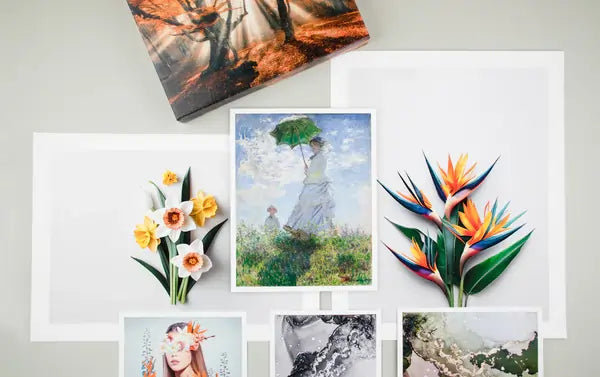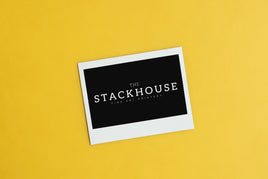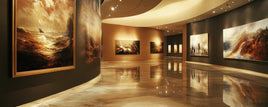TL;DR: Giclée printing stands out for its color accuracy, archival longevity, and ability to reproduce fine detail far beyond standard inkjet or photo prints. It’s the preferred choice for artists and photographers who want their prints to look and last like the original artwork.
Not all printing methods are created equal. While traditional photo or offset printing can produce good results, giclée printing offers something different. It offers museum-level precision and permanence. Let’s look at what makes giclée printing special and why it’s trusted by artists, galleries, and collectors worldwide.
What Makes Giclée Printing Unique
The term “giclée” comes from the French word gicler, meaning “to spray,” referring to the precision inkjet process used to apply pigment-based inks onto high-quality, archival media. The combination of fine ink control and premium materials results in prints with unmatched depth, color, and longevity. You can learn more about the process in our Giclée Printing Guide.
Pigment Inks vs. Dye Inks
One of the biggest differences lies in the ink chemistry. Giclée printing uses pigment-based inks, which are composed of solid color particles that sit on top of the paper fibers instead of soaking in. This creates richer color, sharper details, and improved resistance to UV fading. Standard inkjet or photo printers typically use dye-based inks, which produce strong initial color but can fade or shift more quickly over time.
All giclée prints from The Stackhouse Printery use Epson UltraChrome PRO12 pigment inks for exceptional vibrancy and stability. These inks, when combined with archival media, are rated to last over a century without visible color loss.
Archival-Quality Papers and Canvas
Unlike everyday photo paper, giclée printing uses archival papers and artist-grade canvas designed for long-term display. These materials are acid-free and lignin-free, meaning they won’t yellow or become brittle over time. The choice of texture, finish, and white point allows artists to fine-tune how their work appears under different lighting and framing conditions.
Popular giclée media includes cotton rag papers like Hahnemühle Photo Rag and Epson Hot Press Bright, as well as canvas options such as Exhibition Matte and Satin Canvas. Each surface influences the final mood of the artwork — matte papers soften tones, while canvas adds depth and texture.
Resolution and Precision
Giclée printers can achieve resolutions of 300 DPI or higher, delivering tonal gradations and micro details that other printing processes can’t reproduce. Standard inkjet and lithographic prints often show visible dot patterns or lose subtle gradients in highlights and shadows. Giclée’s fine spray pattern maintains continuous tone across even the most delicate areas of the artwork.
Why Giclée Prints Cost More
Every stage of giclée printing is built around quality, not volume. The archival inks, heavyweight papers, and calibration process add to the production cost but also to the print’s value and lifespan. For artists selling their work, that quality helps justify higher price points and builds trust with collectors who expect professional results.
When to Choose Giclée Printing
Giclée is ideal if you want:
- Fine art reproductions that look identical to the original piece.
- Prints that maintain color accuracy for decades.
- Archival-quality editions for galleries, shows, or collectors.
- Professional-grade materials for resale or display.
Other printing methods, like dye sublimation or offset, may suit high-volume or promotional uses but can’t match giclée’s combination of longevity, precision, and tonal richness.
Ready to see the difference? Explore Giclée Fine Art Prints or request a free media sample set to compare paper and canvas options in person.









